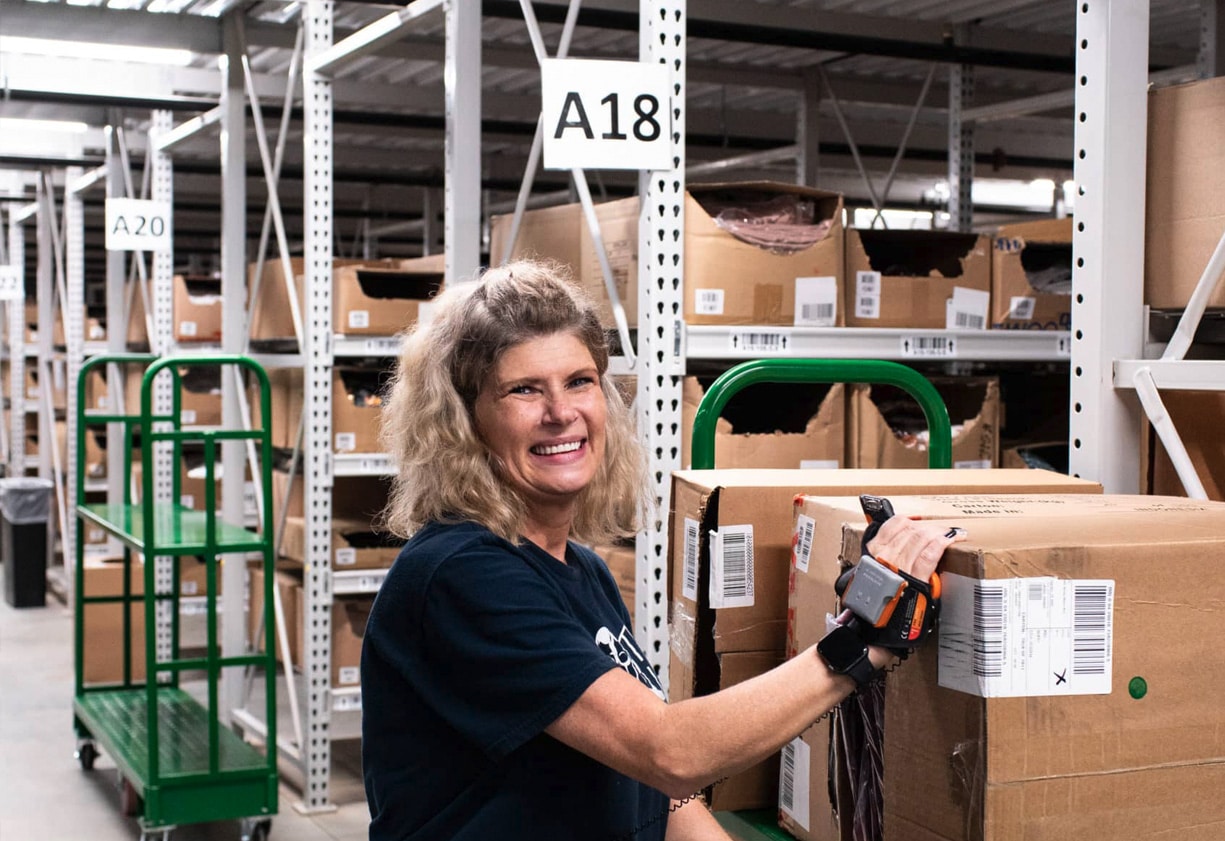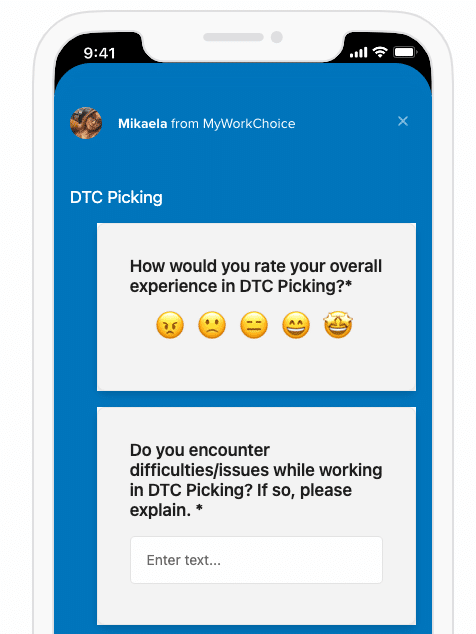
“Your ability to hire, retain, train, and redeploy people is not going to be easy going forward. That’s why HR is so important.” – Josh Bersin HR Global Industry Analyst
One of the hardest mountains to climb when you work in HR, is how to get your business fully staffed and operating at its highest potential (with the unspoken “within budget” added at the end). According to LinkedIn, ninety-three percent of organizations are concerned about employee retention, and the average turnover rate for manufacturing alone is on average 39% (2022), which is down 5% since 2020.
We all go through the same cycle of scrambling to get 20 employees hired on, but still end the day asking ourselves, “how do we keep them?”. If you can make your employees feel heard, supported, and let them know what they come in and do every day makes an impact from the very beginning, you will see retention rates spike. When you retain those employees will in turn save the company money, raise production rates and output, and decrease burnout of your established employees.
Thanking Your Frontline Workers
There are ways to retain your people that do not cost you or your company a dime, and that is setting a positive culture and thanking them for when they pull you out of a hard spot with picking up a shift or recognizing hitting great production. There is more power in a “thank you” or “great job” than you might think. (Maybe throw some swag in there too!)
With my community, I try to recognize those who are called out for hitting above 100% production and I have either sent out a community-wide broadcast message or went to the floor on their next shift to let them know that they are working hard, and the effort is seen.
The more you can make an associate feel less than they are just one of many cogs in a wheel, they will start pushing themselves to be better. I have seen repeatedly where it unlocks a hidden drive for frontline workers, especially when you let them know that this could unlock new opportunities for them for upskilling and development. I challenge you to walk your production floor and thank your associates just for showing up; you will start to see attendance and productivity start to rise.
Coaching Frontline Workers for Success
When my current manager stepped into her role, she asked us how we best feel recognized for our hard work. This pivotal moment for me because I felt like I was being seen as an individual and that she wanted to get to know more about me. The same rule applies to coaching your workers.
There are many ways to coach, but you still must know how to make the biggest impact. My community of workers is so diverse, and I cannot coach a 21-year-old college football player the same way I would a 65-year-old retiree. It all boils down to individualizing and making a meaningful connection. Showing the college students that their duties in their current job relate to their degree field, or how longevity on their resume will set them apart from the other candidates. Bringing on inexperienced workers for them to learn the fundamentals so that they can gain the needed experience and knowledge to become a top performer.
I had a GenZ college football player, who I was at my wits end with from the reoccurring attendance issues, production issues, you name it. After another extended break reported by a client supervisor, I pulled him into my office, and he continued to make excuses for why he did what he did. Instead of throwing the same old “you’re not meeting expectations” speech, I took a different approach. I asked him, “Do you give your football coach 100% out on the field?” and he was thrown and looked at me like I had sprouted a second head, but said “of course,” like it was obvious. I told him, “In here, I’m your coach. You give your football team 100%, I expect the same respect here or you’re off my team.” That made sense to him because it connected into his world, made it relatable, and it clicked.
Providing Assistance and Support
Your workforce is your biggest resource. There have been times I am about to bang my head against the wall trying to understand why certain departments were low or we had a sudden dip or spike in attendance. Luckily, we have been able to survey our community and get real time feedback that we can export and share with our clients to fix problems that they are facing. It also gives details of what is happening on the floor that you might not realize nipping something in the bud before it becomes a real issue.

Inaccessibility can isolate you quickly and nothing will disconnect you more quickly from your workers! I have a no -dumb-questions policy, and that fosters a feeling of trust and support; leading to more confident, self-reliant employees who are invested in both us and the client site.
Prioritizing Your Current Community
Nothing discourages a committed employee like bringing in new hires that are trying to pick up the same hours. Bringing in a constant funnel of new hires seems like a quick fix, but you are missing opportunities to utilize your current community. When you have associates scrounging for hours yet not filling all your needed hours, you have an unbalanced community.
I find it extremely helpful using the MWC App waitlist feature to find out exactly when this is occurring versus needing new hires.
Here is an example after a busy season:
- We had 275+ employees wanting more hours but ended up staying on the waitlist unless someone dropped (called off) their shift.
- We had one department that was only filling at 30%-50%, which was usually thought because it was a more detailed and demanding area.
- After taking an in-depth look we did not saw that we did not have enough employees trained to meet production needs.
- By re-engaging those workers on the waitlist, we saved recruitment costs since we already had a pool of workers to pull from to fill the department’s production.
Overall, upskilling gives your facility the ability to move employees to where they are needed most and creates a better relationship between temporary and full-time employees. We have had some top-performing MWC workers get hired full-time by our clients and some even moved on as supervisors!
Setting and Achieving High Community Standards
From the start of orientation, I tell my community that while I will expect a lot from them, I will always provide the tools and knowledge to meet those expectations. High standards cannot be met without setting our workers up for success. A high-performing workers comes in three steps: prepare, push, and celebrate them.
- Prepare them. Making sure your community is properly trained, well informed, and confident in their ability to complete the job is up to you. Ensure their training is solid. If they have questions about changes or processes, find that information and make sure to send communications with that same information to the entire community. If one has that question, most likely other associates do too.
- Push them. When you set a standard, you must keep it because if you waver, so will they. You are setting the foundation they will be building off for the rest of the time they are part of your community. Giving them a high yet attainable goal and creating that internal competition within themselves will in turn create drive, and soon a top performer.
- Celebrate them! Their wins are your wins. I will cheer on my associates for any achievement, big or small. I am one of those managers that will stand in the hallway and go all soccer mom and high five a community member for hitting high production or even being on time for the first time in two weeks.
Improving Employee Retention Starts with Leaders Like You
Employee retention is simple however, we can often overcomplicate it. When you value your employees, they will in turn value their work. I would challenge anyone in HR, Operations, or Management to walk your floor and show your employees that you are more than just a signature at the bottom of an email.
Set your workers up for success so that they can feel supported and see the path forward at your company rather than applying for the hundreds of other jobs they are seeing weekly on Indeed. As a leader, you can create a culture where frontline workers see that they are making an impact at your organization. Shift your mindset by setting a higher standard for yourself and start seeing production and retention numbers climb.





